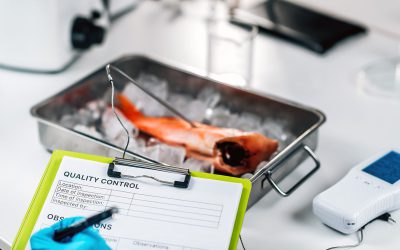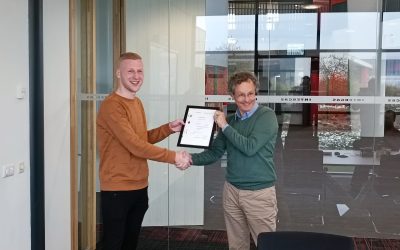The autonomous car, what are the implications for the quality manager?
Toward fully autonomous cars
Cars with fully automatic parking will gradually become commonplace on the streets. The driver will be increasingly relieved in the future, as the car will take over traditional driver tasks. Cars that recognize traffic lights and act in accordance with the signal are in development. Videos of tests by Google in which a car drives a course completely autonomously are world-famous and outline a driverless future. Meanwhile, all major car brands are developing autonomous cars, bringing the once futuristic-looking future ever closer. According to market analysts’ predictions, the first fully autonomous cars will be driving around as early as 2025.
Optimally tailored to customer requirements
The car of “tomorrow” will be increasingly responsive to humans and their desires. The driver will receive information such as weather conditions and traffic conditions. Car breakdown problems can be solved remotely with software. Dashboard data is displayed on the windshield, eliminating the need for the driver to look down and better keep his eyes on the road. Seat belts and airbags will work together and react together to the severity of a collision. When the driver steps in, different values are automatically recognized and the pedals and seat adjust themselves. The pressure of the tires is automatically measured and if the pressure slowly decreases, it is reported. Driver data such as driving style, steering wheel, seat and rearview mirror adjustments will be stored in a memory and can be activated at any time. These and many other amenities will be brought into the car by a computer through various channels. To make this possible, more and more purely mechanical parts are being replaced by mechatronic counterparts, with electronics and software.
Development car of the future places high demands on the Quality Manager
More than ever, there are high demands for product quality, reliability and time-to-market in development, production and release of products and processes. It has to be better, faster and cheaper. Whereas until recently a car consisted of mainly mechanical parts, in the near future software and electronic systems will play an increasingly important role. Today, electronics and software control 70% of a modern car’s functionality. In the near future, this will be 90% or more. All this has major implications for the Quality Manager within the automotive industry and the required knowledge associated with such a position.
Three specialties form the basis of product development
Within automotive development, there are three specialties. “Design for Six Sigma,” which focuses on the reliability and robustness of products and processes, remains of great importance in automotive development. In this regard, the importance of the fields of “software and electronics” and “Functional Safety” is rapidly increasing.
ISO/TS 16949 using Design for Six Sigma as a tool
The aforementioned three subject areas each have their own quality standards. ISO/TS 16949 is an important standard familiar to many automotive suppliers. The standard focuses on process thinking and process control within the automotive supply chain. Traditionally, the quality manager’s role has focused on complying with ISO/TS 16949, implementing and improving a quality management system and the processes defined in the quality management system. The focus of ISO/TS 16949 is on the
reliability and robustness of products and processes. To comply with ISO/TS 16949, tools from Design for Six Sigma are often applied.
Emergence of Automotive SPICE® and Functional Safety
More recent standards include Automotive SPICE® (ISO/IEC 15504) and ISO 26262 (Functional Safety). Automotive SPICE® (SPICE® stands for Software Process Improvement and Capability Determination) is about quality in relation to the software development process. The standard provides a framework for designing and assessing software development processes.
ISO 26262 (Functional Safety) addresses quality in relation to functional safety requirements. The standard focuses on the safety-critical electrical and/or electronic (E/E) systems in an automobile. A supplier is responsible for providing proof that a product was developed according to best general practices. The goal of Functional Safety is to reduce harm to vehicle users and other road users.
With increasing complexity of functionalities in an automobile, the standards Automotive SPICE® (ISO/IEC 15504) and Functional Safety (ISO 26262) are becoming increasingly important.
Integration of the three specialties
Automotive Manufacturers (OEMs) are demanding ever higher levels of performance from their suppliers in the three aforementioned fields. We are also increasingly seeing job postings asking for people who specialize in Design for Six Sigma and APQP, as well as Functional Safety and Automotive SPICE®. Automotive SPICE®, Functional Safety and Design for Six Sigma all focus on developing products that optimally meet customer expectations. An integrated design approach focuses on designing the complete system; hardware, software and mechanics. Several topics play an important role within this approach: customer requirements, design, risk management, capability and testing. These topics are applicable to all three disciplines, however, the detailed implementation and tools to be used differ by discipline.
Both software, electronics and mechanical parts can fail, compromising safety at worst. In all three fields, therefore, sound risk management is important. However, there is a difference in the scope of risks to be analyzed. Automotive SPICE® focuses primarily on risks at the project level. Functional safety ISO 26262 requires risk management at the situational level, and risk management within Design for Six Sigma deals primarily with risks at the product and process level.
The danger is to assess the risks in these three different disciplines separately. Where that can lead is made clear in the statements below:
“There are secure but unreliable systems and reliable but insecure systems.”
“High reliability is neither necessary nor sufficient for security.”
“Highly reliable software is not necessarily secure”
“Increasing software reliability or reducing implementation errors will have little impact on security.”
Functional Safety experts focus on safe systems. Their risk analysis will therefore focus on the safety of a system. Reliability matters less to them. Engineers who work according to Design for Six Sigma thinking provide a reliable product that does not necessarily have to meet Functional Safety requirements. An integrated approach identifies all hazards and risks associated with a product, its processes and life cycle situations. A system will then be not only secure, but also robust and reliable.
Higher safety and lower risk through early-stage coordination
The above example shows that an integrated approach leads to the greatest success. The most successful automotive suppliers that market products that include electronics and software have an integrated view of the three different disciplines. This means that with them, the various disciplines are already working closely together in the very early design phase, achieving much better coordination between them. In short, in order to bring the three disciplines together to their maximum extent early on, a Quality Manager at an automotive supplier should have a thorough knowledge of Automotive SPICE® and Functional Safety in addition to Design for Six Sigma.
Symbol and the integrated view of quality
As part of an international innovative development project, Symbol, together with its foreign project partners, has developed a 3-day training course intended for every engineer and manager who is (in)directly involved in product safety and the quality of product and system development within Automotive. Participants in this training are not trained as experts in any of the three aforementioned disciplines. The very purpose of the training is to teach participants how to best integrate these disciplines in practice.
This three-day training, taking place in November, was fully booked within 10 days. Symbol will offer this training again in March 2015. Successful training has already been provided at a major automotive supplier in the Czech Republic and at Automotive clusters in Germany, Austria and Slovenia. If you would like more information about the integrated application of Automotive SPICE®, Functional Safety and Design for Six Sigma please contact us, phone number: 053 – 2030240.
Latest news/blogs
From Theory to Practice: Junior Consultant at Stoneridge
From theory to practice: Junior Consultant at Stoneridge Before working at Symbol, Junior...
Optimize Quality Management with AI Tools
Optimize quality management with AI tools In the modern business environment, quality management...
The Netherlands’ youngest Black Belt speaks
A ideal is not yet not a solutionEmiel recently gave a training session on the topic of problem...


